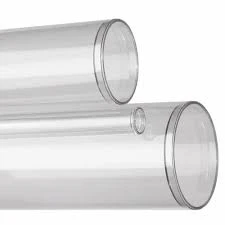Nov . 19, 2024 04:17 Back to list
hdpe welding rod
Understanding HDPE Welding Rods and Their Applications
High-Density Polyethylene (HDPE) is a versatile thermoplastic widely used in various industries due to its durability, chemical resistance, and lightweight characteristics. A key aspect of working with HDPE is the appropriate joining technique, and this is where HDPE welding rods come into play. These rods are essential for creating strong, reliable joints in HDPE applications, whether in construction, manufacturing, or repair work.
What Are HDPE Welding Rods?
HDPE welding rods are specialized products designed for the fusion welding of HDPE materials. They are typically made from the same HDPE resin used in sheets, pipes, and other forms of HDPE products, ensuring compatibility and excellent bonding. These rods come in various diameters and lengths, depending on the specific welding requirements. They are categorized into different grades based on their intended applications, including general-purpose, stress-crack resistant, and other formulations tailored for different environments and uses.
The Welding Process
The process of welding HDPE involves heating the materials to their melting point and allowing them to join through a combination of pressure and cooling. HDPE welding can be performed using several methods, including hot air welding, extrusion welding, and socket welding.
1. Hot Air Welding This method uses a hot air tool to melt the surfaces of the HDPE parts and the welding rod. As the surfaces melt, the welding rod is introduced into the joint to create a seamless bond as they cool together.
2. Extrusion Welding In this technique, a welding machine feeds the HDPE welding rod into a heated nozzle, which melts the rod and simultaneously fuses it with the base material. This method is especially useful for larger joints or thicker materials.
3. Socket Welding This method involves joining two HDPE components at their ends, using a welding rod to fill the joint. The rod is heated and inserted into the joint, where it fuses with both base parts as it cools.
hdpe welding rod

Applications of HDPE Welding Rods
HDPE welding rods are widely used in various industries due to their robustness and reliability. Notable applications include
1. Industrial Fabrication HDPE welding rods are commonly used in the large-scale fabrication of tanks, containers, and other structural components. Their ability to create strong welds is crucial for ensuring the integrity of these products.
2. Aquaculture and Water Management In aquaculture, HDPE is often used for constructing water tanks and ponds. Welding rods help create secure, watertight seams that can withstand aquatic environments.
3. Pipeline Repairs HDPE is frequently used in piping systems, and welding rods are essential for repairing leaks or cracks in existing pipelines, ensuring a seamless integration that maintains flow efficiency.
4. Custom Projects Many artisans and fabricators use HDPE welding rods for custom projects, allowing for personalized creations that require strong, resilient joints.
Conclusion
HDPE welding rods play a vital role in the successful joining of HDPE materials. Their ability to create durable and chemical-resistant bonds makes them invaluable in various industrial applications. Understanding the types of welding processes and the significance of welding rods can empower manufacturers, engineers, and DIY enthusiasts to utilize HDPE to its full potential. Whether for large fabrication projects or minor repairs, HDPE welding rods are an essential tool for ensuring quality and longevity in every joint.
-
PVC Transparent Sheet Roll - Durable & Flexible PVC Plastic Sheet Roll for Industrial & Home Use
NewsJun.24,2025
-
High-Quality PVC PPR Pipes and Fittings Durable ERA PPR Solutions
NewsJun.10,2025
-
High-Quality Large HDPE Sheets & Large Diameter PVC Pipe Durable Large PVC Pipe Supplier
NewsJun.10,2025
-
High Density Polyethylene Cutting Board - Durable & Food Safe
NewsJun.09,2025
-
3 Inch PVC Pipe for Durable Irrigation Affordable & Reliable
NewsJun.09,2025
-
Premium PPR Plastic Water Pipe Fittings - Durable & Leak-Free
NewsJun.09,2025

